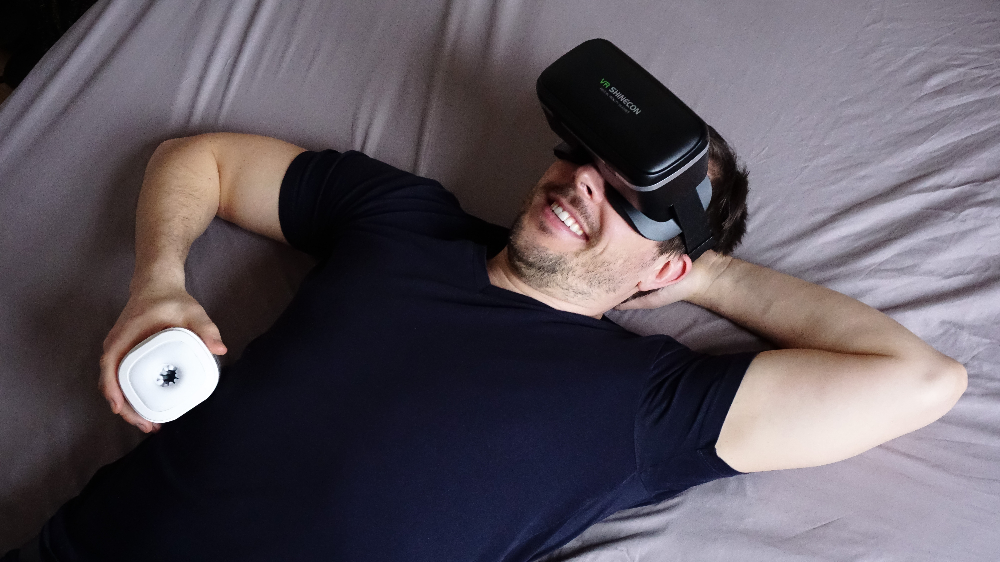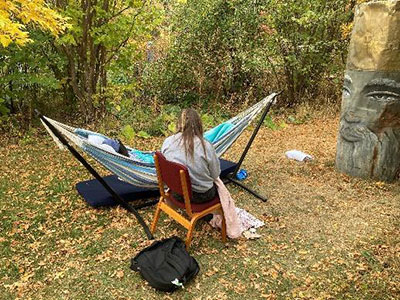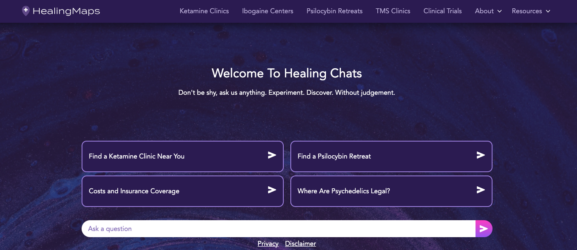What Will the Ketamine Clinic of the Future Look Like?
Doctors prescribe ketamine; nurses or EMTs inject the substance. Seen from the outside, ketamine journeys can seem ordinary–as run-of-the-mill as any other doctor’s visit.
Clients check in with the receptionist. They’re brought into their own private room, where their vital signs are taken, and they’re given headphones and eye shades. The infusion lasts approximately 45 minutes and is followed by a rest period as the peak of the ketamine infusion fades away. Patients may feel woozy for a few hours after the infusion and are warned not to drive.
This experience is common across ketamine clinics.
Interested in Ketamine Treatment? Find vetted ketamine clinics near you
Ketamine’s Effects, Meanwhile, Are Anything But Ordinary
In contrast to the (often) unassuming, comforting, and familiar settings of many ketamine clinics, a ketamine journey is often profound, surprising, and stirring. A ketamine journey is as different from a mundane doctor’s visit as Mars is different from the bottom of the ocean. Your workaday reality vanishes. And you enter a black and colorful dreamland where your worries can seem a thousand miles away.
This dichotomy can be striking: how the sensations of ketamine are riveting and new, but the setting is often prosaic and pedestrian. It’s like seeing a Supernova from the back seat of a Chevy Nova.
RELATED: What Does Ketamine Feel Like?
How Ketamine Clinics Are Changing
A clinic doesn’t need to be cold and impersonal, and neither does a therapeutic ketamine session.
A growing number of providers are already realizing that an extraordinary medicine like ketamine deserves extraordinary surroundings. We’re starting to see changes, as ketamine specialists build clinics that are nearly as inspiring as the ketamine experience itself.
Some clinics have already started paying more attention to the aesthetic side of ketamine therapy and the importance of providing clients with a unique and possibly beautiful place for their ketamine infusion.

So What Will Ketamine Clinics Look Like in 2040?
Futuristic Ketamine Clinics
We might imagine a scene from The Jetsons: robots scurrying around a sleek metallic room, handing clinicians their tools. Clients sign in on a screen, are weighed by a kiosk, and called back to the room by text message. A moving walkway shuttles them to their room with a massage chair and haptic mat.
“Ketamine clinics of the future may radically transform the therapeutic landscape through the incorporation of immersive technologies like virtual reality and augmented reality,” says Chris Cohn, CEO of Daytryp Health & Wellness (and occasional author at HealingMaps).
VR and AR headsets can quickly change your immediate environment, and transport you to a beach in Bali, an Antarctic glacier, a Berlin nightclub, or a Hawaiian volcano.
“Patients in clinics could put on VR headsets to navigate digitally constructed landscapes/environments, synchronized with relaxing music or therapeutic narratives that are designed to enhance the introspective and consciousness-expanding properties of ketamine,” said Cohn. Tailored to individual therapeutic needs and preferences, these digital journeys can foster a heightened sense of relaxation, detachment, and inward focus that could facilitate deeper engagement with the subconscious mind.”
RELATED: Here’s a Breakdown of Typical Ketamine Infusion Costs
Surrounded by machines, technology, and artificial intelligence, the ketamine journey may feel more immersive.
“The introduction of artificial intelligence and machine learning algorithms will allow the integration of biofeedback mechanisms, which can modulate the virtual environment in response to the patient’s physiological parameters, such as heart rate and brainwave patterns,” Cohn said. “This adaptive interplay could optimize the therapeutic effect and ensure a safer and more controlled psychedelic experience.”
Clinics like L.I.F.E. Medicine in Denver already offer neurofeedback along with their ketamine treatments. Neurofeedback monitors the brain and gives information back to the patient to help them track their own thinking –- and feeling.
ARE YOU A CLINIC OFFER NEW THERAPIES? This Company is Building the Future of Mental Health Clinics
Nature-based Ketamine Clinics?
In contrast to a futuristic, computerized ketamine clinic, doctors could create a ketamine space that looks more organic, earthy, and nature-based. A ketamine clinic could look like a maloca in the jungle or a sandy, beachy Jamaican mushroom retreat.
Some clinics already place patients in a room with a large window facing nature. Which allows them to take in the great outdoors during the session. In Colorado, the Psychedelic Research and Training Institute has given ketamine in a retreat center close to rolling hills and pasture land. Journeyers emerged from ketamine and, after shaking off the daze, greeted migrating deer or grazing cows. It was reassuring and comforting.

‘Psychedelic’ Ketamine Clinics
What about retro? Ketamine clinics could go with a stereotypical, trippy vibe, like a 70s psychedelic wonderland. Vivid colors could decorate the walls, while the funkiest grooves play on 8-track machines.
Some modern clinics, like those of Field Trip Health, already look like they’re inspired by retro psychedelic vibes, with orange and green color schemes, wooden, earthy accents and soft pillows that look almost like beanbags.

What About Transportation?
Ketamine clinics currently advise clients not to drive to their ketamine infusion sessions. Currently, you may rely on friends, family, or a rideshare app to bring you to and from your ketamine therapy session. Future ketamine clinics may have drivers available to chauffeur clients to and from their appointments, lessening the burden on individuals to find their own way to and from the clinic.
RELATED: Ketamine Dosage: What Clinics Give for IV, IM, Nasal and Oral Doses
What About Additional Treatments?
Future ketamine clinics may spread beyond ketamine into other health modalities, like IV vitamin therapy, acupuncture, massage, spas. How magical would it be to emerge from a ketamine session and go right into a massage or foot bath? While saunas and cold plunges may be overly stimulating and potentially dangerous for the inexperienced, people who regularly participate in heat or cold immersion might enjoy the chance to dip into a cold plunge or pop into a sauna after their ketamine session.
RELATED: Solving the Insurance Puzzle: How to Get Your Ketamine Therapy Covered
What About MDMA and Psilocybin?
Maybe the biggest change to how ketamine clinics work is that they won’t just be ketamine clinics. The FDA is close to approving MDMA and psilocybin-assisted psychotherapy, brought to market by MAPS and Compass Pathways. The ketamine clinics of today are likely to be the first ones to add these psychedelics. One huge factor is that MDMA and psilocybin last a lot longer than ketamine; usually about four to six hours. How will ketamine clinics adjust? And people on MDMA and psilocybin are more likely to want to walk and look around. How will ketamine clinics give them space?
According to Ty Zakovich of Healing CREI, a company building out the infrastructure of clinics treating novel therapies like ketamine, MDMA and psilocybin-assisted therapy, “We believe we are going to see a big change in the way ketamine treatment centers are set up. With MDMA likely being FDA approved within the next year these clinics will need to build out long duration, larger rooms with bathrooms attached in order to facilitate the medicine.”
“I think that more and more ketamine providers will realize this and prepare for it so they are ready once approved,” continued Ty. “Furthermore more providers are implementing other modalities of healing within their centers to be able to treat and help their patients in multiple ways.”
Ketamine clinics of the future seem likely to be more than just ketamine clinics. Many will be a mix of wellness centers, doctors offices, and psychedelic retreats. Many will go high-tech; others will go for simplicity.
In their beauty, thoughtfulness, and care, they might eventually rival the richness, elegance, and momentousness of a ketamine journey itself.



